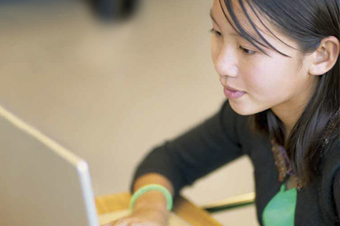Innovative Programs, Targeted Resources Key Regents Exam Success
UAlbany School of Education study sheds light on best practices among high-performing New York high schools
Contact(s): Catherine Herman (518) 956-8150
 |
The Just for Kids-New York project at UAlbany's School of Education has released the report: What Makes High Schools Work: How higher-performing high schools in New York adapt and thrive.
|
ALBANY, N.Y. (January 21, 2009) -- A rigorous curriculum, innovative instructional programs, transparent communication and strategic targeting of resources are among the key factors found in high schools whose students consistently perform well on State Regents Exams according to a new University at Albany School of Education study. The report, What Makes High Schools Work: How higher-performing high schools in New York adapt and thrive, was conducted by researchers at the School's Just for the Kids-New York project. The study noted evidenced-based decision making -- decision making that incorporates evidence beyond state assessments -- as a critical driver of student success.
The schools whose students excel:
1. Provide a rigorous curriculum, have high expectations for all students, encourage and support more students to take higher-level (AP and honors) classes, and hold students to a high standard of performance,
2. Encourage �disciplined� innovation (in instruction, technology, curriculum, scheduling) to support student learning,
3. Communicate with students, parents, and community openly about their programs, curriculum, goals, successes, and challenges,
4. Make decisions about program, staffing, etc, based on evidence from a variety of sources, not just state assessments, and
5. Target resources, including personnel, to where they are most needed to ensure student success.
The study's findings showcase high schools that are successfully engaging their teenage students, challenging them, and keeping them in school through graduation. All of the featured schools well exceed the state�s average high school completion rate.
"We encourage schools and districts across the state to take a look at the report and consider how they might do better on each of the key dimensions as they strive to improve their own graduation rates," said Robert Bangert-Drowns, acting dean of the School of Education. "The University made a special effort to study schools from all corners of the state, looking especially at those whose students face the added challenge of poverty."
To conduct the study, researchers selected a representative sample of 10 schools whose students consistently score well on five Regents exams and 5 similar schools whose students consistently get average scores on those same exams. After visiting each school the researchers analyzed their data to determine the differences between the two groups.
The high school study is the third in a series of studies conducted by Just for the Kids-New York and demonstrates the benefits of partnerships between elementary, secondary and higher education. Earlier studies identified best practices of higher-performing elementary and middle schools. This year the researchers are focusing on effective science instruction at the middle school level.
For more about the studies and to obtain copies of this or earlier reports: https://www.albany.edu/aire/kids.
![]() For more news, subscribe to UAlbany's RSS headline feeds
For more news, subscribe to UAlbany's RSS headline feeds
Educationally and culturally, the University at Albany-SUNY puts "The World Within Reach" for its 18,000 students. An internationally recognized research university with 58 undergraduate majors and 128 graduate degree programs, UAlbany is a leader among all New York State colleges and universities in such diverse fields as public policy, nanotechnology and criminal justice. With a curriculum enhanced by 300 study-abroad opportunities, UAlbany launches great careers. For more information about this globally ranked University, visit www.albany.edu. For UAlbany's extensive roster of faculty experts, visit www.albany.edu/news/experts.shtml.


